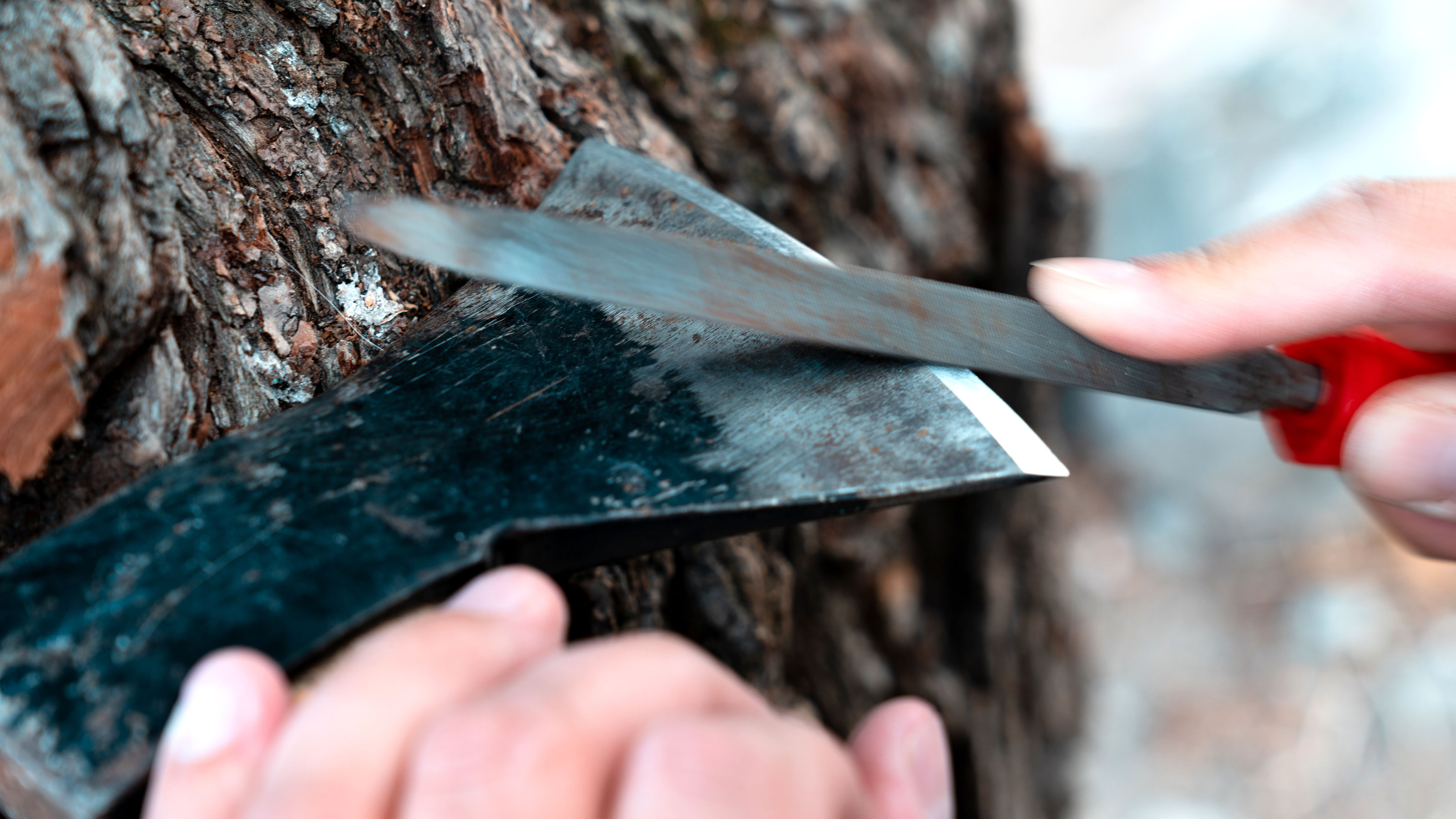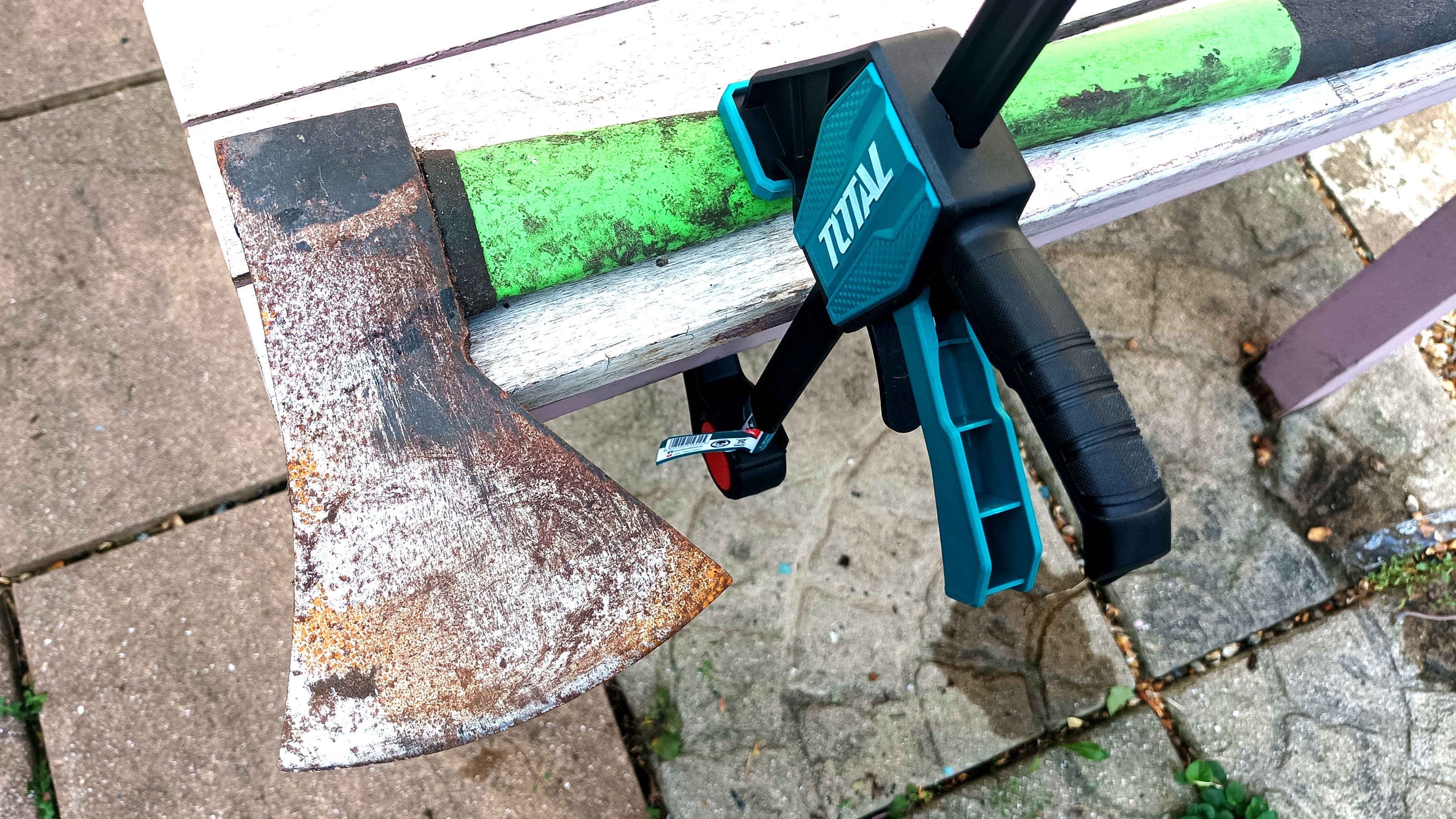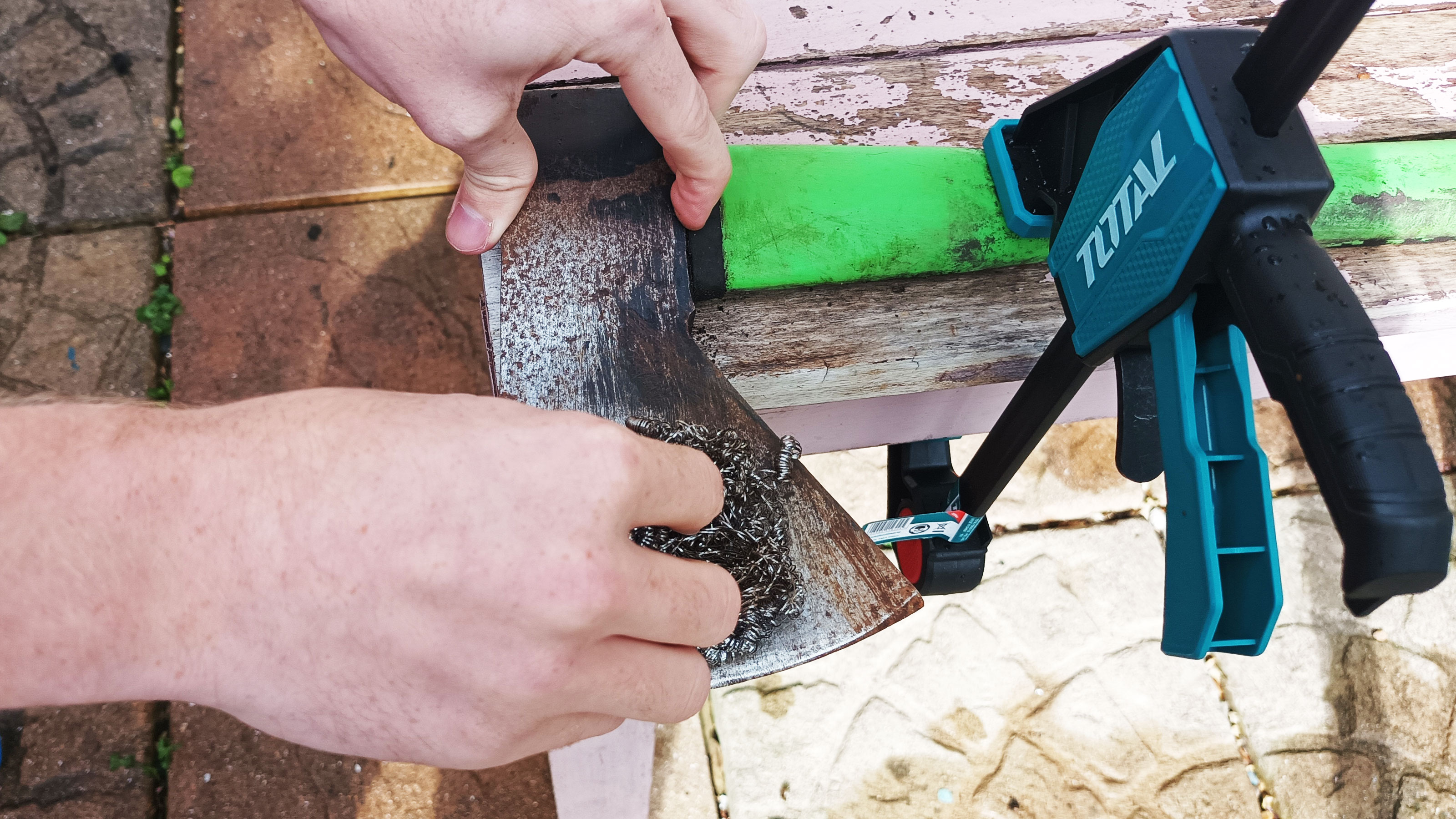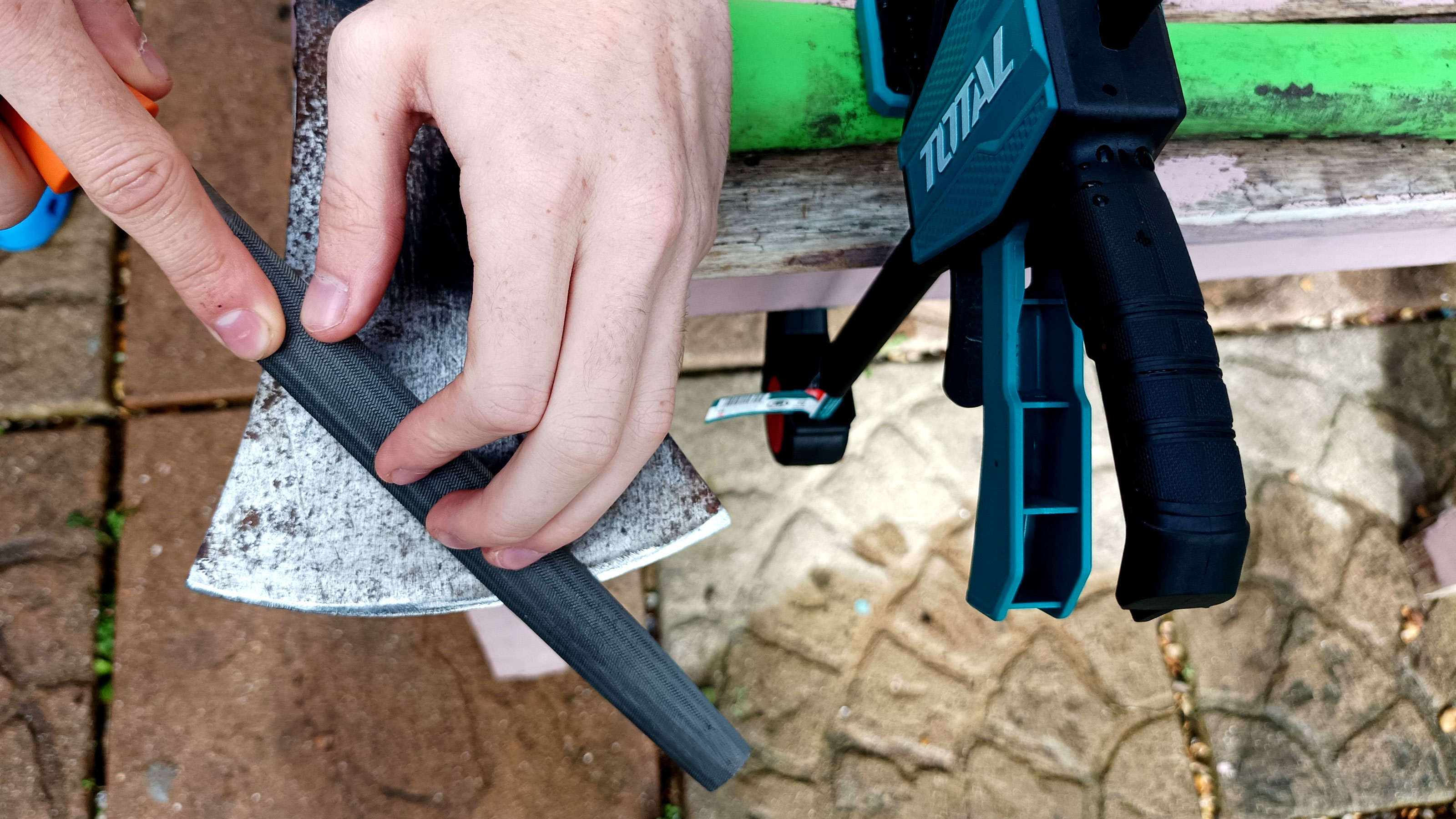How to sharpen an axe safely in four quick steps, according to a DIY expert
Do you know how to sharpen an axe? Here we guide you through the process to ensure your axe stays sharp ready for slicing, chopping and cutting

You’ll need to know how to sharpen an axe if you own one. A dull or blunt edge simply won’t work as efficiently or effectively as a well-maintained tool. It's not a lengthy or difficult task, but it is one that you need to get right so you can appreciate your axe at its best.
There’s several options and tools that can be used to sharpen an axe. Some are cheaper and easier to use, but all achieve similar results. The popular options are a specialist metal file or a whetstone, but you can buy specialist sharpening wheels that attach to a drill.
Here we look at the process that will get your axe ready for chopping logs for log burning stoves, open fires and chopping down unwanted greenery in your garden.
Step-by-step guide on how to sharpen an axe
Here we look at how to sharpen an axe head with a metal file. The steps are similar whether you are using a whetstone or grinder.
1. Secure the axe
If you have a vice, secure the axe handle in the vice with the axe head pushed up against the vice and tighten. If you don’t have a vice you can use a clamp like this set of Jorgensen Professional Woodworking Clamps from Amazon, G-Clamps or similar to secure the axe to a secure and steady table.
Make sure that the edge of the axe head is over the edge of the table so you have access to the edge that needs sharpening.
A vice can be a useful tool when sharpening garden shears and other tools too.

2. Clean the axe head
Before you start sharpening an axe you will need to give it a clean to get rid of any dirt, sap, debris and rust that might hinder the sharpening process. This is same when maintaining other tools too, such as when sharpening secateurs. Do this with a soft cloth and warm soapy water and brush afterward. Or use a stiff brush, like a nail brush.
If you have any stubborn marks you can use a fine grade sandpaper (such as this pack of 10 sheets from Fit For The Job at Amazon), wire wool or a metal scrubber, as these are also a good choice to get rid of rust.

3. Sharpen the axe
Before you start, put on a pair of sturdy gloves – you don’t have to but we recommend that you do. Now get your file, place at a 30-40 degree angle on the axe edge and push forward the length of the file. You don’t need to pull the file back. Now lift and repeat this across the length of the edge. You may need to do this several times to get a decent edge.

4. Sharpen the other side of the axe
Now turn the axe over, secure and repeat the process. Try to sharpen with a similar amount of strokes or movements so the cutting edge of the blade is still centred. If you remove too much on one side you will get an off centre cutting edge that can upset the balance of the axe. When finished give the axe a quick test to see how well it works. If needed, sharpen both edges a little more.
FAQs
How sharp should an axe be?
You might think that the sharper an axe is the better it is but this is not the case. An axe doesn’t need to be razor sharp. If it is, it will have a thin edge that is more prone to damage. It is more likely to get a nick or chip which will not affect its cutting capabilities, it will also mean that you will have to sharpen the axe more often.
Run your finger along the edge, and feel for any small knicks and use a tool to get rid of these when you find them.
Can you sharpen an axe with sandpaper?
You can sharpen an axe with sandpaper, but it is not as effective as other more suitable tools like a file or whetstone. You will need to use a coarse sandpaper to start with and then work your way through less coarse grits to get a decent working finish. It will take longer than other sharpening tools, but you can speed up the process by using an orbital sander like this BLACK+DECKER Orbital Sander from Amazon.
However, sandpaper is a good choice when you need to clean up an axe before sharpening. It's a quick and effective way to get rid of debris on the axe head.
How much does it cost for a professional to sharpen an axe?
This will depend on the size of the axe head and what condition the blade is in, but expect to pay somewhere between £5-£10 if you are taking the axe to a local sharpening service.
How often it will need sharpening will depend on how often and for how long it is used for. It is recommended that an axe is sharpened after every three to five hours, to keep it in the same condition it was after being sharpened.
But, this isn’t a full sharpening, this will be a quick going over with the sharpening tool of choice. Alternatively sharpen when you notice that performance has fallen off, or you are having to work harder to achieve the same results as before.
Is it OK to sharpen an axe on a grinder?
If you have a bench grinder or angle grinder you can use these to sharpen your axe. This is a quick and effective way to sharpen an axe, but make sure that you have the right safety gear, especially google and gloves. If using an angle grinder you will need to secure the axe, ideally in a vice. If you don’t have a vice, get someone to help and hold the axe on a flat, secure surface, while you use the angle grinder.
Get the Homebuilding & Renovating Newsletter
Bring your dream home to life with expert advice, how to guides and design inspiration. Sign up for our newsletter and get two free tickets to a Homebuilding & Renovating Show near you.
Steve Jenkins is a freelance content creator with over two decades of experience working in digital and print and was previously the DIY content editor for Homebuilding & Renovating.
He is a keen DIYer with over 20 years of experience in transforming and renovating the many homes he has lived in. He specialises in painting and decorating, but has a wide range of skills gleaned from working in the building trade for around 10 years and spending time at night school learning how to plaster and plumb.
He has fitted kitchens, tiled bathrooms and kitchens, laid many floors, built partition walls, plastered walls, plumbed in bathrooms, worked on loft conversions and much more. And when he's not sure how to tackle a DIY project he has a wide network of friends – including plumbers, gas engineers, tilers, carpenters, painters and decorators, electricians and builders – in the trade to call upon.

